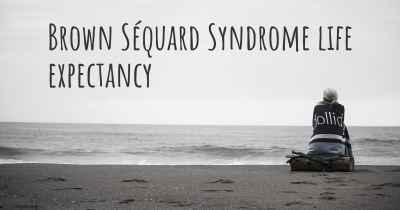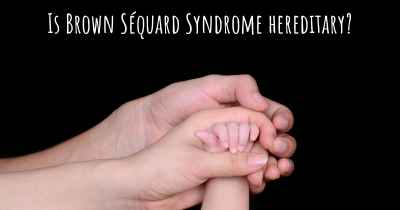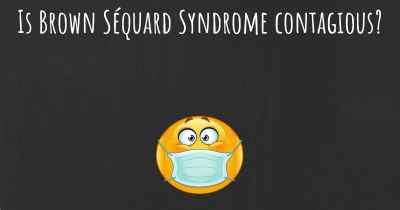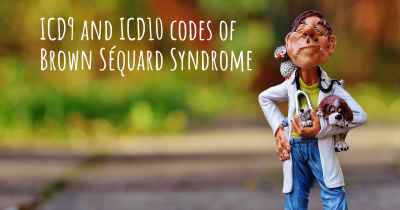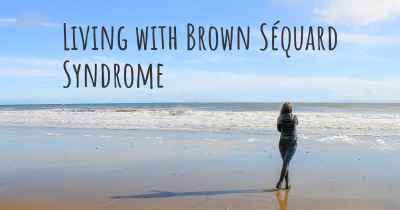Which are the symptoms of Brown Séquard Syndrome?
See the worst symptoms of affected by Brown Séquard Syndrome here
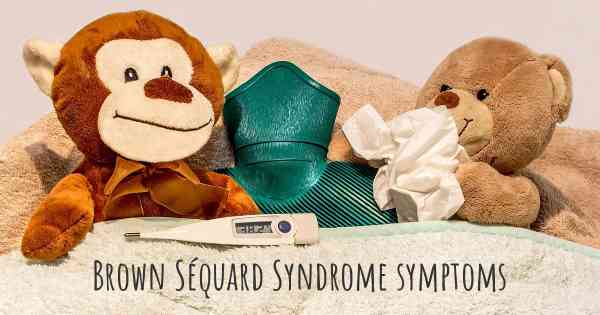
Brown-Séquard Syndrome is a rare neurological condition that results from damage to one side of the spinal cord. It is named after the French neurologist Charles-Édouard Brown-Séquard, who first described the syndrome in 1850. This condition typically occurs due to trauma, such as a spinal cord injury, but can also be caused by tumors, infections, or other spinal cord disorders.
The hallmark feature of Brown-Séquard Syndrome is a distinct pattern of neurological deficits that affect the body differently on each side. The symptoms can vary depending on the level of the spinal cord injury and the extent of damage. The most common presentation involves the following:
1. Ipsilateral Motor Weakness: This refers to weakness or paralysis on the same side of the body as the spinal cord injury. The affected limb may have difficulty with movement, coordination, and muscle control. The severity of weakness can range from mild to severe.
2. Contralateral Loss of Pain and Temperature Sensation: Contralateral means the loss occurs on the opposite side of the body from the injury. Brown-Séquard Syndrome often leads to a loss of pain and temperature sensation on the side opposite to the injury. This occurs because the nerve fibers responsible for transmitting these sensations cross over to the opposite side of the spinal cord before ascending to the brain.
3. Ipsilateral Loss of Proprioception and Vibration Sensation: Proprioception refers to the ability to sense the position and movement of our body parts. Vibration sensation is the ability to perceive vibrations. In Brown-Séquard Syndrome, there is a loss of proprioception and vibration sensation on the same side as the injury. This occurs because the nerve fibers responsible for transmitting these sensations do not cross over to the opposite side of the spinal cord.
4. Hyperreflexia: Hyperreflexia is an exaggerated reflex response. In Brown-Séquard Syndrome, the reflexes on the side of the injury may become hyperactive. This can manifest as increased muscle tone, exaggerated reflex movements, and abnormal reflex responses.
5. Bladder and Bowel Dysfunction: Depending on the level of the spinal cord injury, Brown-Séquard Syndrome can also lead to bladder and bowel dysfunction. This may include urinary or fecal incontinence, difficulty initiating or stopping urination, or constipation.
It is important to note that the symptoms of Brown-Séquard Syndrome can vary from person to person, and not all individuals will experience the same combination or severity of symptoms. Additionally, the syndrome can present differently depending on the level of the spinal cord injury.
Diagnosis of Brown-Séquard Syndrome involves a thorough neurological examination, medical history review, and imaging studies such as magnetic resonance imaging (MRI) to assess the spinal cord and identify the underlying cause of the syndrome.
Treatment for Brown-Séquard Syndrome focuses on addressing the underlying cause, managing symptoms, and promoting rehabilitation. This may involve surgical intervention, medications for pain management, physical therapy, occupational therapy, and assistive devices to improve mobility and independence.
In conclusion, Brown-Séquard Syndrome is a rare neurological condition characterized by a distinct pattern of symptoms resulting from damage to one side of the spinal cord. The syndrome presents with ipsilateral motor weakness, contralateral loss of pain and temperature sensation, ipsilateral loss of proprioception and vibration sensation, hyperreflexia, and bladder and bowel dysfunction. Prompt diagnosis and appropriate management are crucial in optimizing outcomes for individuals with this condition.
